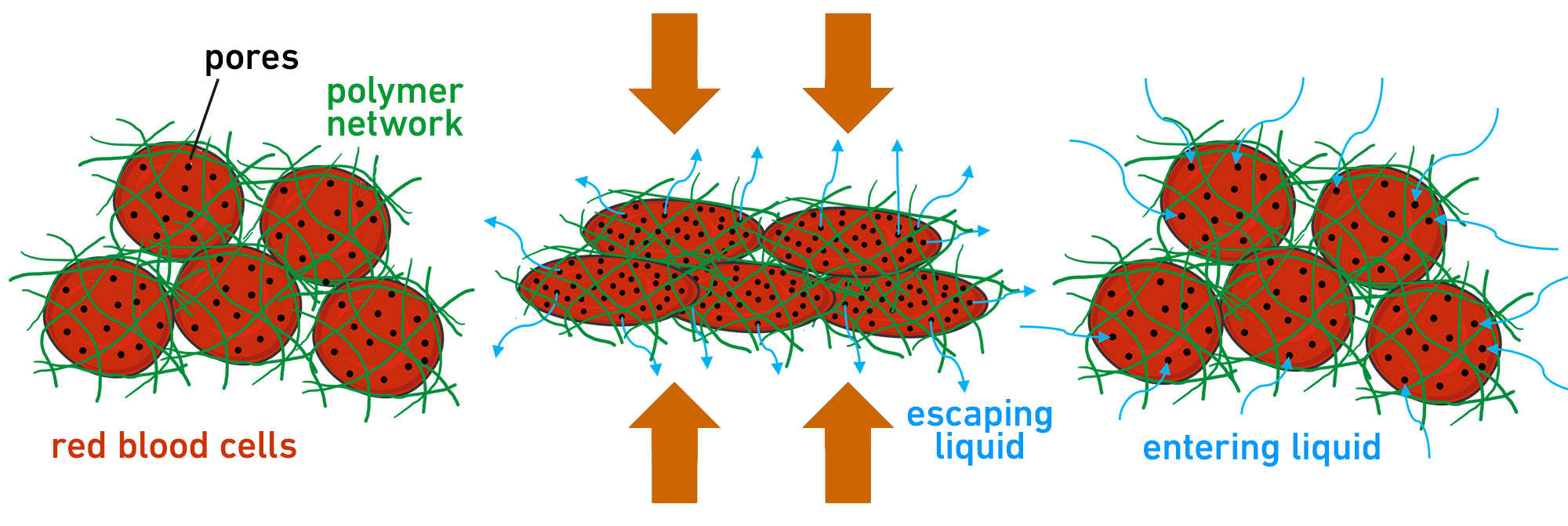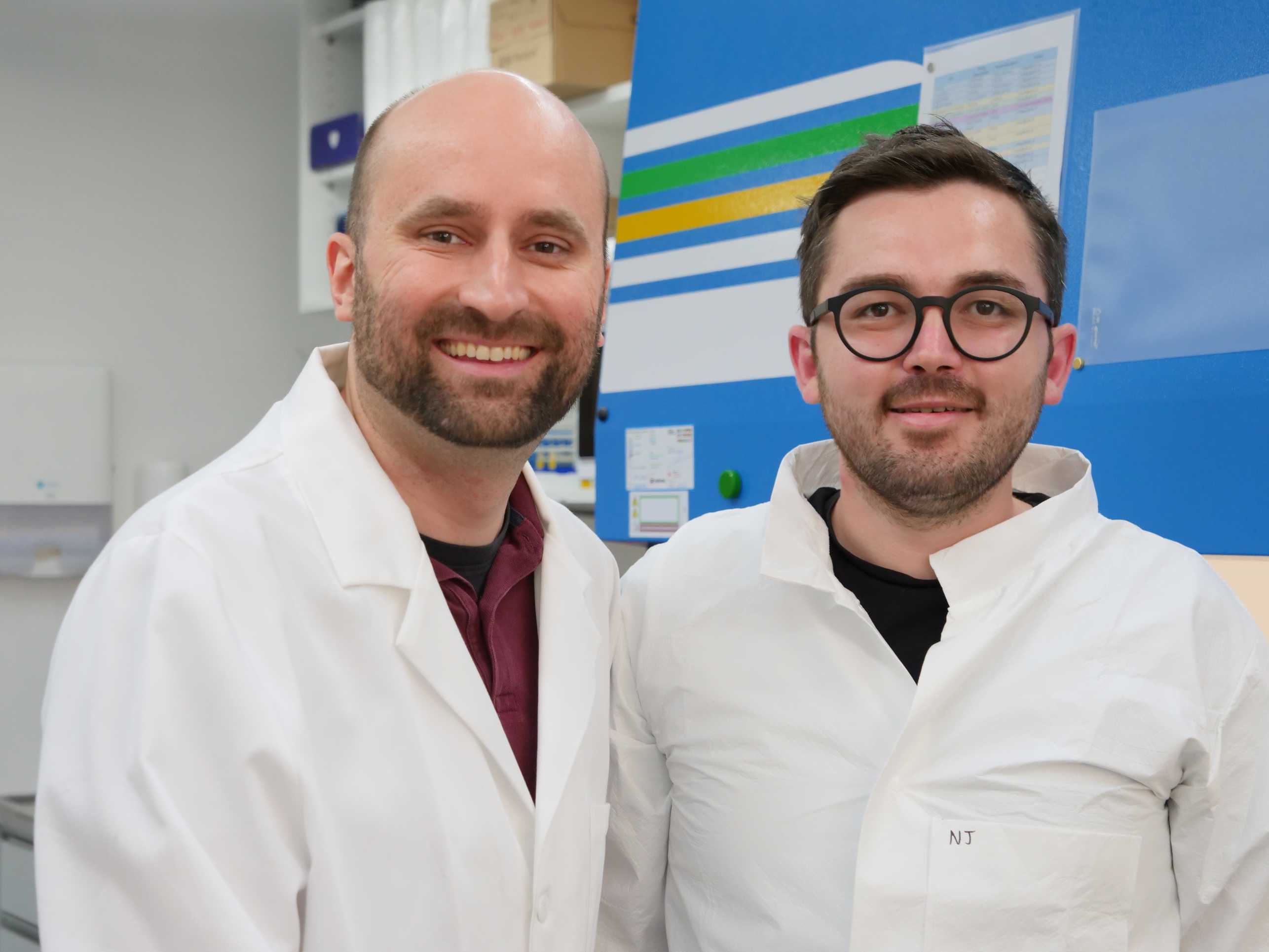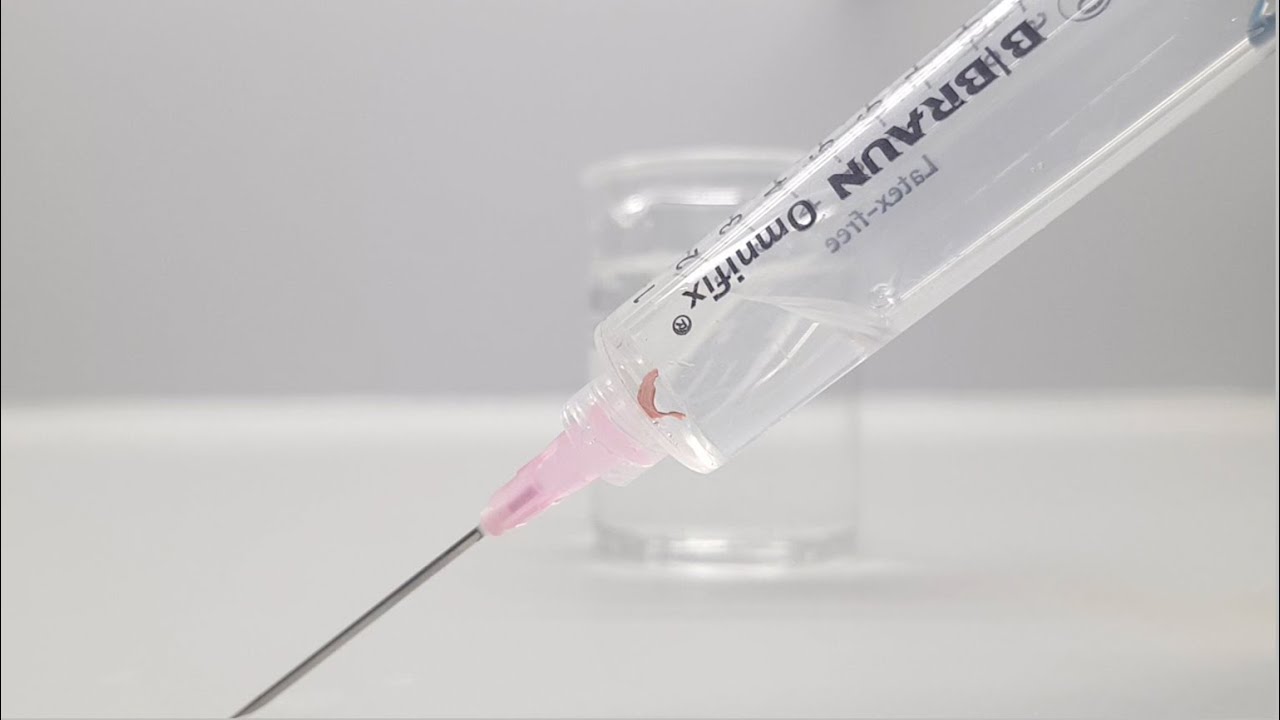Repairing damaged tissues through hydrogel injection
Hydrogels support tissue regeneration after an accident or illness. Oncay Yasa and Robert Katzschmann have developed sponge-like hydrogels that can be injected through a cannula, thus offering patients a minimally invasive procedure for implantation.
Professor Robert Katzschmann and Dr. Oncay Yasa have invented new hydrogel constructs that behave like sponges. The material shrinks dramatically when squeezed and regains its shape when released. Such hydrogels can be used in regenerative medicine, for example to repair cartilage and bone tissues. The highly compressible hydrogel is engineered outside the body and then injected by a needle. The advantage is a minimally invasive procedure to place the material where it is needed.
The magic trick behind the sponge-like behaviour of the hydrogel involves specially prepared red blood cells, which form the scaffold. The cells have been perforated so that liquids can diffuse in and out. When the hydrogel is squeezed, the liquid is drained from the cells, thus, reducing their size and the size of the overall hydrogel structure. When the stress is lifted, liquid flows back into the interior of the cells and the structure expands macroscopically. The membranes of red blood cells are extraordinarily robust and deform reversibly under stress, which makes them ideal building blocks for the compressible hydrogel.

Yasa comments on further advantages of their hydrogel: “This invention is biocompatible and biodegradable, as the patient’s own red blood cells can be used. This is an important aspect, as the hydrogel will support the tissue regeneration in the first phase and then slowly degrade and make space for the naturally regrowing tissue.”
Katzschmann sees the red blood cell hydrogel as a platform technology with many applications. Besides tissue engineering in regenerative medicine, the hydrogel may act as a drug delivery system. The hydrogel can be loaded with a specific drug during polymerization and injected locally, where the treatment is needed. This avoids the widespread distribution of drugs in the body and potentially reduces side-effects. A long-term goal is the engineering of soft-robots from functional hydrogels, which are capable of locomotion inside the body. Katzschmann welcomes industry feedback on further applications: “We are open to apply our technology to new target areas, adapt it for different types of therapeutic carriers and also consider other delivery devices beyond syringes.”

Contact/Links:
Soft Robotics Lab, Professor Robert Katzschmann
Publication: "external pagePerforated red blood cells enable compressible and injectable hydrogels as therapeutic vehicles"
Please, contact ETH transfer for patent information:
Do you want to get more "News for Industry" stories?
external pageFollow us on LinkedIn
Are you looking for research partners at ETH Zurich?
Contact ETH Industry Relations

